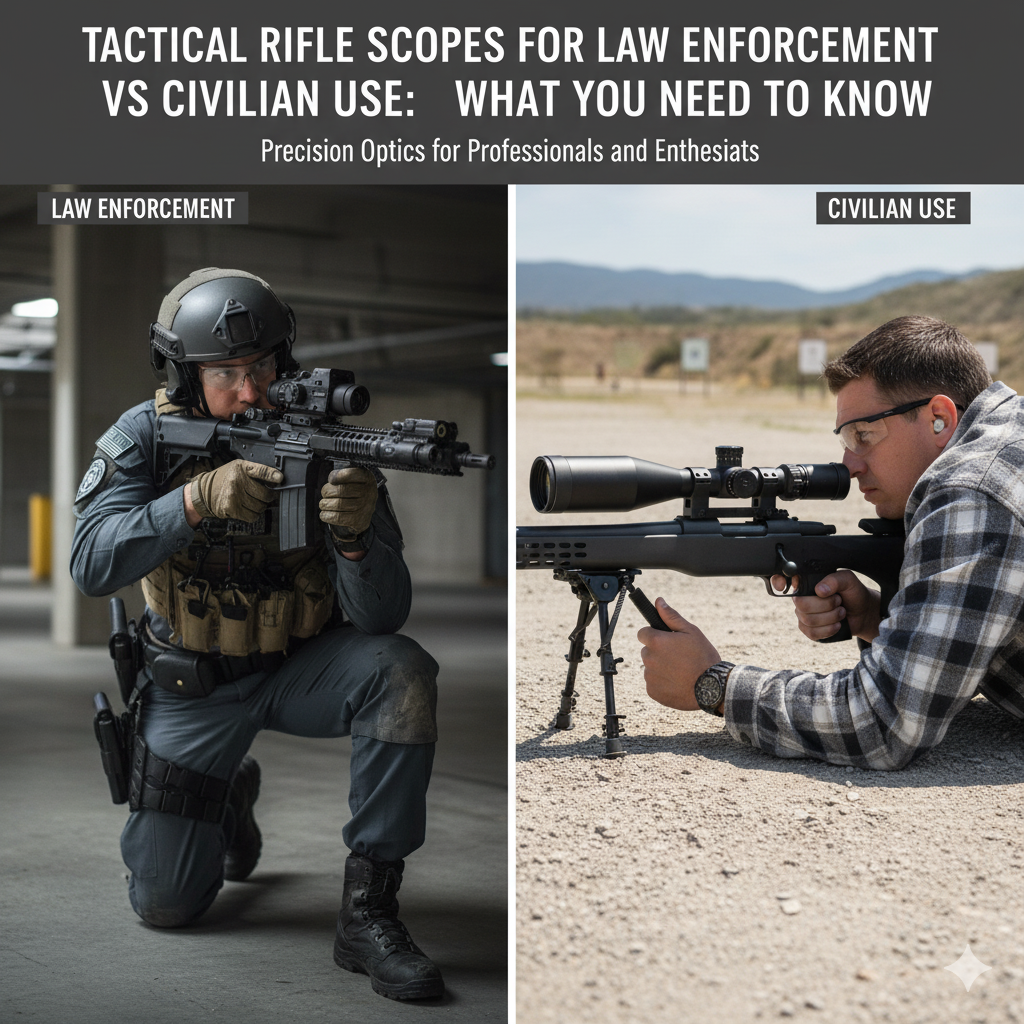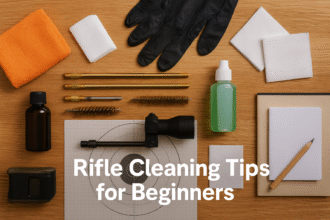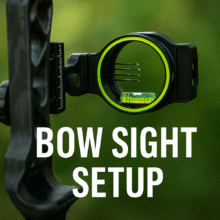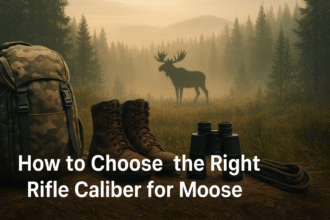Tactical Rifle Scopes for Law Enforcement vs Civilian Use: What You Need to Know

When it comes to tactical rifle scopes, not all optics are created equal. The differences between law enforcement scopes and civilian rifle optics go far beyond branding or price tags they reflect distinct missions, accountability standards, and operational environments.
Law enforcement officers rely on optics that perform flawlessly in life-or-death scenarios, where precision, durability, and speed matter most. Civilians including hunters, sport shooters, and competitors value versatility, affordability, and application-specific performance.
In this comprehensive guide, we’ll explore the key differences between tactical rifle scopes for law enforcement and civilian use, breaking down everything from magnification and reticle design to durability, legal standards, and training requirements. Whether you’re a professional or an enthusiast, this will help you make an informed decision before your next optic upgrade.
Table of Contents
- 1. Mission Defines the Scope: How Purpose Shapes Optic Design
- 2. Magnification: Range vs Speed
- 3. Reticle Design: Simplicity vs Precision Data
- 4. Turrets & Adjustments: Locked vs Exposed
- 5. Optical Quality: Clarity Counts for Both
- 6. Durability & Environmental Sealing
- 7. Legal & Accountability Considerations
- 8. Training & Human Factors
- 9. Budgeting & Buying Advice
- 10. Quick Comparison Table
- 11. Maintenance Tips
- Conclusion
1. Mission Defines the Scope: How Purpose Shapes Optic Design
Law Enforcement Needs
Law enforcement rifles serve in unpredictable, high-pressure environments from urban settings and barricade situations to open-field operations. Officers may need to switch from close-quarters engagement to precision shots at 200–300 meters within seconds.
Key Requirements:
- Rapid target acquisition
- Low-light and night vision compatibility
- Rugged reliability under stress
- Repeatable zero and turret adjustments
- Accountability through documentation and maintenance logs
A patrol rifle optic must be battle-ready every time, holding zero through rough handling, vehicle vibrations, and varied weather conditions. That’s why Low-Power Variable Optics (LPVOs) like 1–6x or 1–8x scopes have become the gold standard for law enforcement.
Civilian Needs
Civilians, on the other hand, have more diverse shooting applications:
- Hunters need optics that perform well in dawn or dusk conditions.
- Precision shooters need long-range accuracy and fine adjustments.
- Home-defense owners need fast-acquisition, low-magnification scopes or red dots.
Key Requirements:
- Versatility
- Cost-effectiveness
- Comfort and usability
- Feature balance over extreme ruggedness
Civilians often seek scopes that deliver maximum value for their budget, with customizable features for their shooting style rather than strict duty specifications.
2. Magnification: Range vs Speed
Law Enforcement
Police and tactical units prioritize speed and clarity over extreme zoom.
Their typical engagement distances are within 300 meters sometimes less than 50. LPVOs (1–6x, 1–8x, 2–10x) provide:
- A true 1x setting for both-eyes-open aiming (like a red dot).
- Higher magnification for medium-range precision shots.
The result is a flexible optic that bridges close-quarters speed with enough reach for decisive accuracy.
Civilian Shooters
Civilians have the freedom to specialize.
- Hunters benefit from 1–4x or 3–9x scopes, giving a balance of visibility and magnification.
- Long-range shooters go for 4–16x, 5–25x, or even 6–24x scopes for target shooting beyond 600 yards.
👉 SEO Tip: For many readers, searching “best LPVO for civilians” or “best 1–8x tactical scope” — you can interlink to relevant gear reviews or buying guides.
3. Reticle Design: Simplicity vs Precision Data
Law Enforcement Reticles
Law enforcement reticles must be uncluttered and intuitive. Officers can’t waste time deciphering holdover lines in a high-stress situation.
Popular options include:
- Illuminated center dot for quick target acquisition
- Simple crosshair with hash marks for range estimation
- BDC (Bullet Drop Compensator) reticles tailored to standard-duty ammo
Reticle illumination with NV-compatible brightness settings is also crucial for operations under night vision or low ambient light.
Civilian Reticles
Civilians have more freedom to experiment.
- Hunters often prefer BDC reticles for common calibers like .308 or 6.5 Creedmoor.
- Precision shooters choose MRAD or MOA reticles in a First Focal Plane (FFP) design, which maintains accuracy across magnification levels.
- Plinkers or budget users may opt for standard duplex reticles simple, affordable, and effective.
4. Turrets & Adjustments: Locked vs Exposed
Law Enforcement Scopes
Duty-grade optics require precise, tactile turrets that are reliable even after rough use. Most teams prefer:
- Locking or capped turrets to prevent accidental movement.
- Mil or MOA markings for easy communication among trained officers.
- Zero-stop features to instantly return to the baseline setting after adjustments.
This ensures that officers’ rifles maintain absolute consistency under field conditions a must for accountability and safety.
Civilian Scopes
Civilian shooters, especially long-range enthusiasts, love exposed turrets for quick windage and elevation adjustments.
Hunters may prefer capped turrets to avoid snagging in brush or while carrying rifles in the field.
Again, the civilian market emphasizes personal preference and scenario-specific design over standardized protocol.
5. Optical Quality: Clarity Counts for Both
Regardless of use, good glass makes or breaks an optic.
Law Enforcement:
- Top-tier anti-reflective coatings to handle glare from headlights, flashlights, and streetlamps.
- Reliable low-light transmission for night operations.
- Edge-to-edge clarity to quickly identify threats.
Civilians:
- Hunters demand bright glass during dawn and dusk when animals are most active.
- Target shooters benefit from premium coatings to read mirage and wind indicators.
If your budget allows, investing in high-quality glass (Schott, ED, or HD lenses) will significantly improve accuracy, reduce eye strain, and last for years.
6. Durability & Environmental Sealing
Durability is where law enforcement scopes truly earn their price tags.
A duty optic must survive:
- Drops
- Recoil shock
- Rain, snow, and extreme temperatures
- Constant transport in patrol vehicles
Expect military-grade sealing (IPX7+), nitrogen or argon purging, and hard-anodized aircraft aluminum tubes.
For civilians, durability is still valuable but you can save by choosing mid-tier models if you’re not using your rifle daily in harsh conditions.
7. Legal & Accountability Considerations
Law Enforcement
Every piece of police equipment, including optics, is subject to chain-of-custody and policy documentation.
- Officers must log zeroing procedures, adjustments, and maintenance.
- Some agencies require optics with data-logging capability or body-cam integration for evidence.
- Procurement often involves warranty, MIL-SPEC certification, and vendor reliability contracts.
Civilians
Civilians don’t face such strict oversight but must follow firearms regulations and ensure responsible storage and usage.
In some areas, accessories like night vision or thermal optics may be restricted — so always check local laws.
8. Training & Human Factors
No optic can replace training.
- Law enforcement undergo standardized qualification courses that cover zeroing, range estimation, and low-light engagement.
- Civilians should practice under realistic conditions not just at the bench.
Tips:
- Practice transitions between magnification levels.
- Train eye relief consistency and reticle holdovers.
- Record your ballistic data (ammo, range, zero distance).
Consistent practice ensures the optic becomes a natural extension of your rifle.
9. Budgeting & Buying Advice
For Law Enforcement Agencies
- Prioritize total lifecycle cost, not just initial price.
- Ensure manufacturer support, spare parts, and service agreements.
- Consider standardizing optics across departments for easier training and maintenance.
For Civilian Shooters
- Define your primary shooting purpose before shopping.
- Don’t overpay for features you won’t use (e.g., NV settings for daytime hunting).
- Look for strong warranties — brands like Vortex, Trijicon, and Leupold offer lifetime coverage.
Pro Tip: Used optics from reputable sources can offer premium glass at a mid-tier price — just verify optical clarity and turret integrity.
10. Quick Comparison Table
| Feature | Law Enforcement Scopes | Civilian Scopes |
|---|---|---|
| Magnification | 1–6x / 1–8x LPVO | 1–4x (hunting), 6–24x (long-range) |
| Reticle Type | Simple illuminated, NV-compatible | BDC, MRAD/MOA, duplex |
| Turrets | Locking, zero-stop, MIL/MOA | Exposed or capped |
| Durability | MIL-SPEC rugged, waterproof | Moderate to heavy-duty |
| Training Requirement | Standardized qualification | Self-directed |
| Cost | High (agency-grade) | Wide range ($200–$2000+) |
| Legal Oversight | Policy and evidence chain | Civilian laws vary |
11. Maintenance Tips
- Keep lenses clean using microfiber and optical solution.
- Record zero adjustments and environmental notes.
- Check mount torque and screws regularly.
- Store scopes in a cool, dry place with silica gel packs.
- For duty use, maintain inspection logs it’s not just about maintenance; it’s accountability.
Conclusion
When comparing tactical rifle scopes for law enforcement vs civilian use, it becomes clear that while the technology often overlaps, the purpose and application make all the difference.
For law enforcement, every optic must perform flawlessly under stress offering uncompromising durability, quick target acquisition, and absolute reliability in unpredictable environments. These scopes are engineered for professionals who need mission-ready precision and the assurance that every shot counts, no matter the conditions.
For civilian shooters, the focus shifts toward adaptability and personal preference. Whether it’s for hunting, home defense, or competitive long-range shooting, civilians can choose from a wider range of scopes that match their specific needs and budget. They enjoy more freedom in reticle design, magnification, and turret configuration often prioritizing versatility and value over military-grade ruggedness.
At the end of the day, both communities share the same ultimate goal: accuracy, confidence, and control behind the rifle. Whether you wear a badge or carry your rifle into the field, the right optic can make you a more efficient, responsible, and capable marksman.
So before making your next purchase, define your mission, understand your environment, and invest in an optic that’s not just powerful but purpose-built. Because in the world of tactical optics, clarity and reliability are what truly separate the good from the exceptional.






